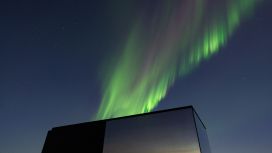
Mystic Northern Lights
Posted by Sif
Iceland's night sky from autumn to spring - Magical and colorful
While the summer days are endlessly bright, darkness returns to Iceland's nights in autumn. And what does that mean? The moon appears again like a bright Swiss cheese in the dark night sky, and no matter how much I bark, it won't come down, howl!!
But what might be much more interesting for you: the Northern Lights are returning, and it's a very special wauw!!
While the phenomenon is a regular occurrence for Icelanders, for many travelers from further down on the globe, it's a unique spectacle. Esther and Pierre were also drawn to Iceland several times before finally settling here. Esther describes it like this:
The Northern Lights are magical, mystical, and unpredictable. The enchanting figures and their movements in the night sky are never the same. Sometimes they're subtle and serene, like a white-green veil; sometimes they glow in various colors and dance wildly. And sometimes they're so intense that it seems as if the entire sky is falling down on me in bright, glittering colors.
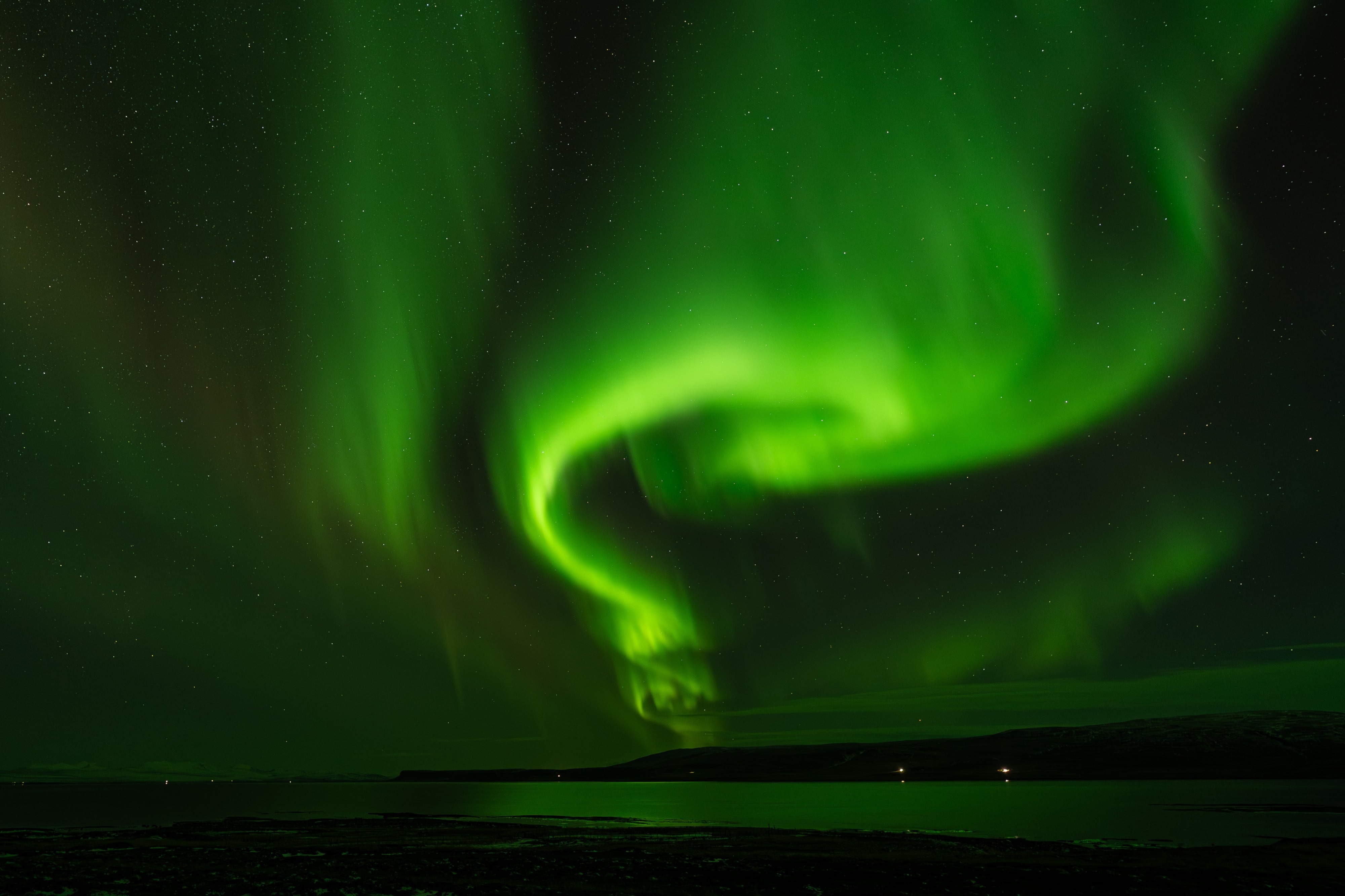
I'm not a theorist, but today I'll give it a try to explain everything about that glittering thing called the Northern Lights. Of course, you can go out and hope to see them. But it's like hunting wild ptarmigan; you have to be in the right place at the right time. And with a little knowledge and preparation, you can significantly increase your chances.
PS: Of course, I've never hunted a ptarmigan, woof.
Requirements
So... the Northern Lights appear when the sun is particularly active and farts - err, hurls all sorts of wild particles into space. These then hurtle towards the Earth, collide with molecules in the Earth's atmosphere, and release energy, which leads to the light show in the sky. Incidentally, the Northern Lights are also called the Polar Lights or Aurora Borealis, it's all the same thing.
To see the Northern Lights, a few things have to come together:
-
Complete darkness
In Iceland, you won't see the green glow in summer, as the sun provides brightness even in the middle of the night. The Northern Lights can be admired here between mid-August and mid-April.
A full moon isn't good either, because it illuminates the night. And because that's when the werewolves are on the loose, howl!
Artificial light also ruins all the fun. The only thing that helps is getting out of the city. -
Clear skies
When the clouds hang over you and pee on you, it's not worth leaving the warm basket. But be careful, in Iceland they sometimes disappear faster than I can grab a treat.
-
Wild solar storm
As mentioned before, the big show starts when the sun spews a lot of particles towards Earth. The more the sun explodes, the more colorful and wild our sky becomes.
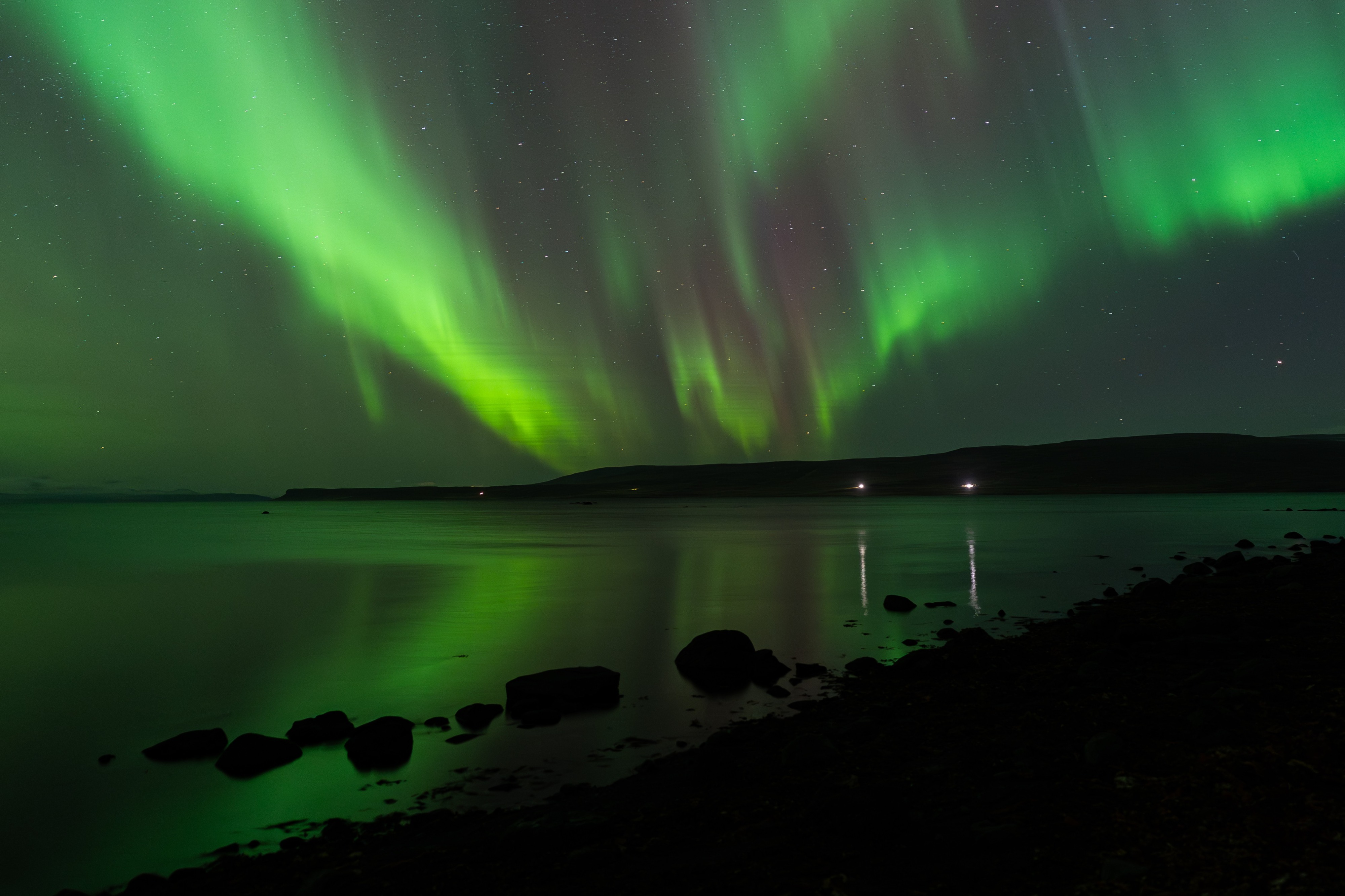
Forecast
The two-legged creatures often use the KP index to predict the likelihood of the Northern Lights. This is apparently a kind of classification of geomagnetic activity and is on a scale of 0-9. I have no idea what that means. All I know is that the higher the KP index, the more excited master and mistress become. Up to a 2, they show little reaction, but if the value is higher, the camera and tripod are ready, and from 4 or 5 onwards, they go out to look at the sky more often than I can pee. Unless it rains, that spoils their mood, and then I have to threaten to pee on the carpet to get them to go outside with me.
There are two easy ways to learn more about the likelihood of seeing the Northern Lights soon:
-
App
On those small, rectangular things that two-legged creatures like to stare at and swipe on, there are various apps where you can find the current and predicted KP index, as well as plenty of other information about solar-related stuff. Some apps also offer weather forecasts and the option to set an alarm when the probability increases. Three examples:
- Aurora
- Hello Aurora
- Iceland at Night
-
Website of the Icelandic Meteorological Office
In addition to the weather forecast, you can also find the predicted KP index here. There are also details about sunrise and sunset, as well as the phase of the moon.
But a promising forecast with a high KP index is no guarantee of a colorfully dancing sky, and conversely, a truly impressive spectacle can sometimes occur despite low values. Also, the weather doesn't always do what the weathermen predict, so looking outside is the only truly reliable option.
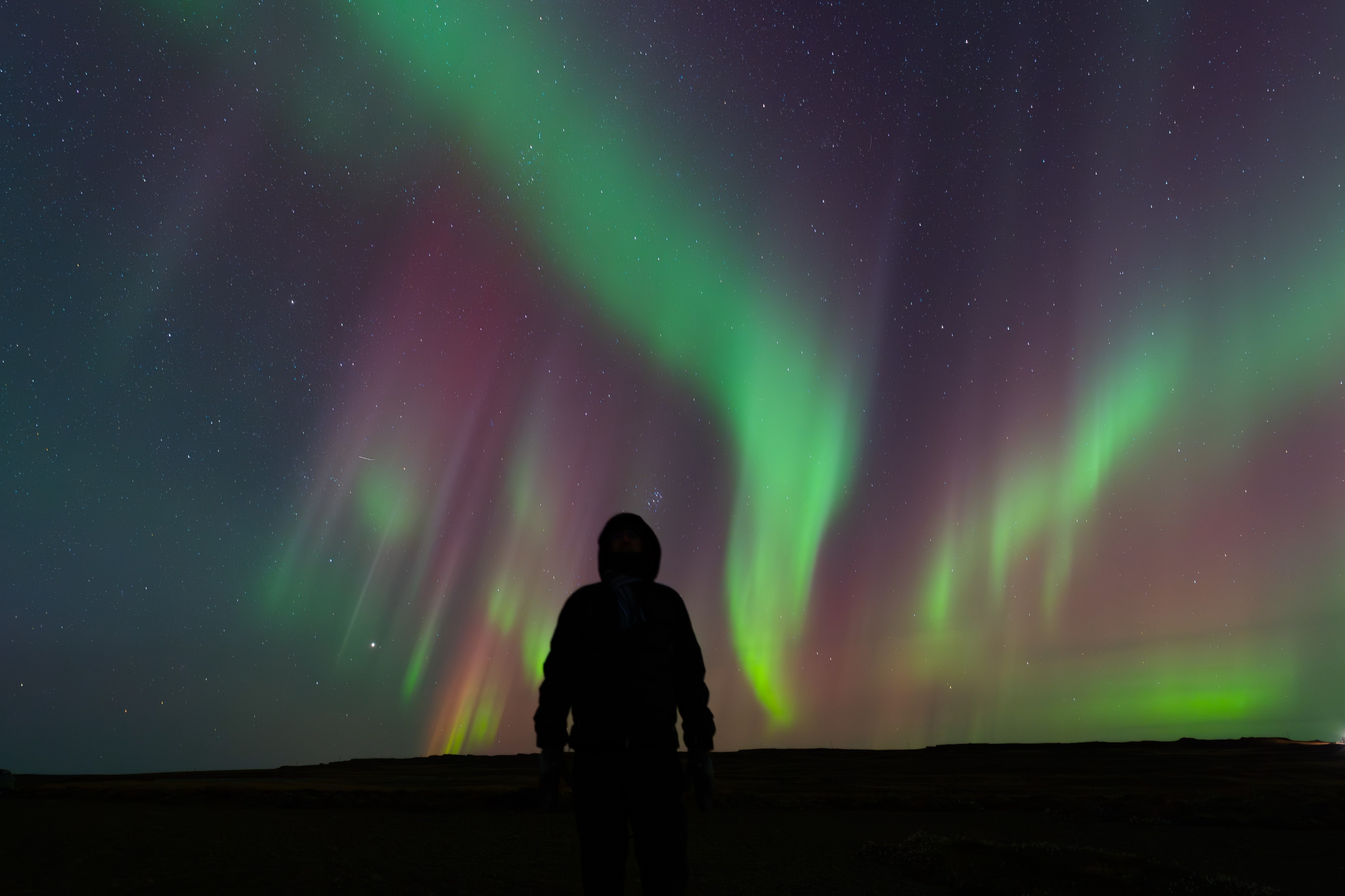
Photography
When everything falls into place and the show begins, it's of course great to capture the Northern Lights in photos. I'm more suited to posing in front of the camera lens than pressing buttons behind it. But I've learned a few helpful things nonetheless.
-
Tripod
And don't lick it, it'll blur everything.
-
Wide-angle lens
This will allow you to capture a lot of sky and colorful spectacle.
-
Manual mode
Automatic mode is usually a bit overwhelmed by the splendor of the Northern Lights.
-
Aperture
Open it as wide as possible. Something like 2.8 or, even better, 1.8. The larger the aperture, the more light. More light = more Northern Lights!
-
Shutter speed
Play around with it! For very strong aurora, one second might be enough, but usually 3-5 seconds are more appropriate, and for weaker intensity, try 10 seconds or even more.
-
ISO value
The higher the ISO value, the more light you capture, but too high a value will result in noise in your images. The ideal value depends heavily on your camera and the strength of the Northern Lights. It's best to experiment with different values.
-
Manual focus
For once, don't focus on your dog, but on the stars or at infinity.
-
Self-timer or remote shutter release
So you don't blur the image while you tap the camera with your paws.
-
RAW format
Best if you want to tinker with it later on your computer.
-
Flashlight
If you want to look particularly professional, then use a headlamp with red light. With white light, your eyes always need a while to adjust to the darkness after turning it off. This doesn't happen with red light.
-
Warm clothing
Unless you have fur as fluffy as mine.
If all of this is way too complicated for you or you don't have the equipment, just take your phone, point it up, and shoot in night mode. You can still get some great pictures that way. It's probably enough to show off on Instagram or in a family chat.
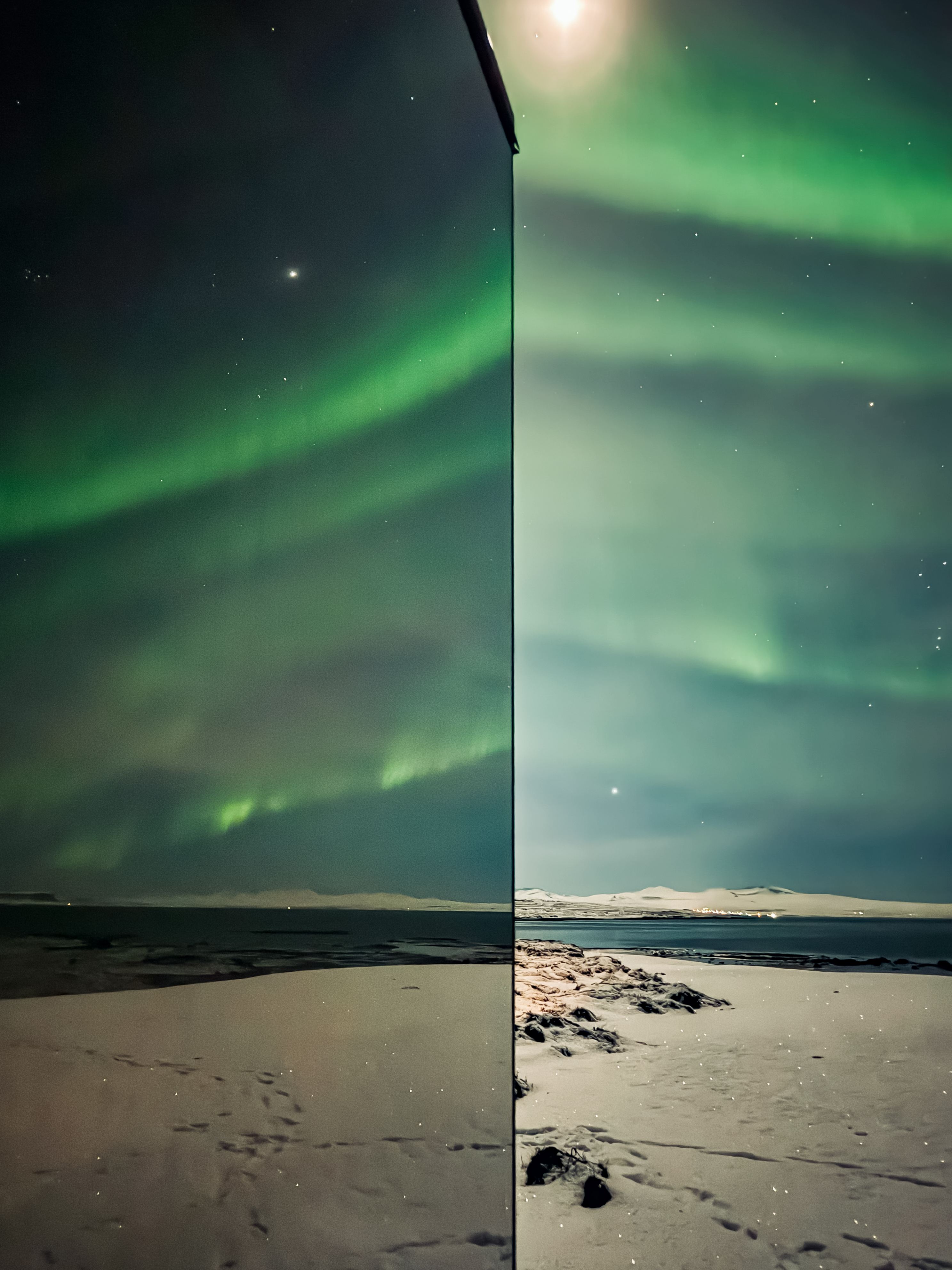
The perfect place
My last (completely altruistic) tip: The Mystic Light Lodge is a particularly good place to spot the Northern Lights. It's far away from all the bright, blinking lights of the human world. Darkness is guaranteed - unless the sun is shining or the moon is full. And when the aurora starts glowing, you don't even have to go out into the cold! Thanks to the huge roof window and the thick panoramic windows, you can enjoy the show from the comfort of your cozy bed. Not only will the sky light up, but your eyes will too.
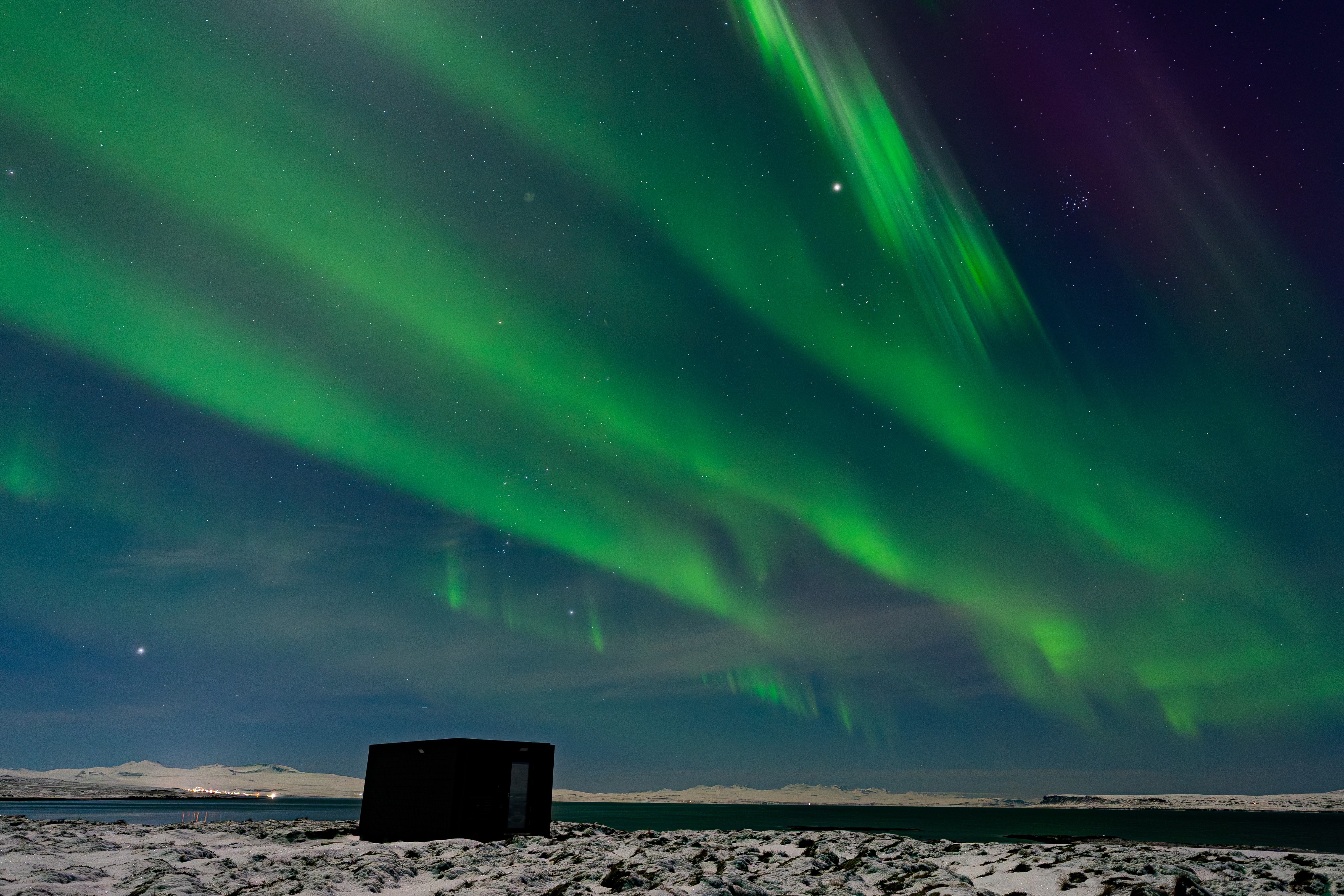
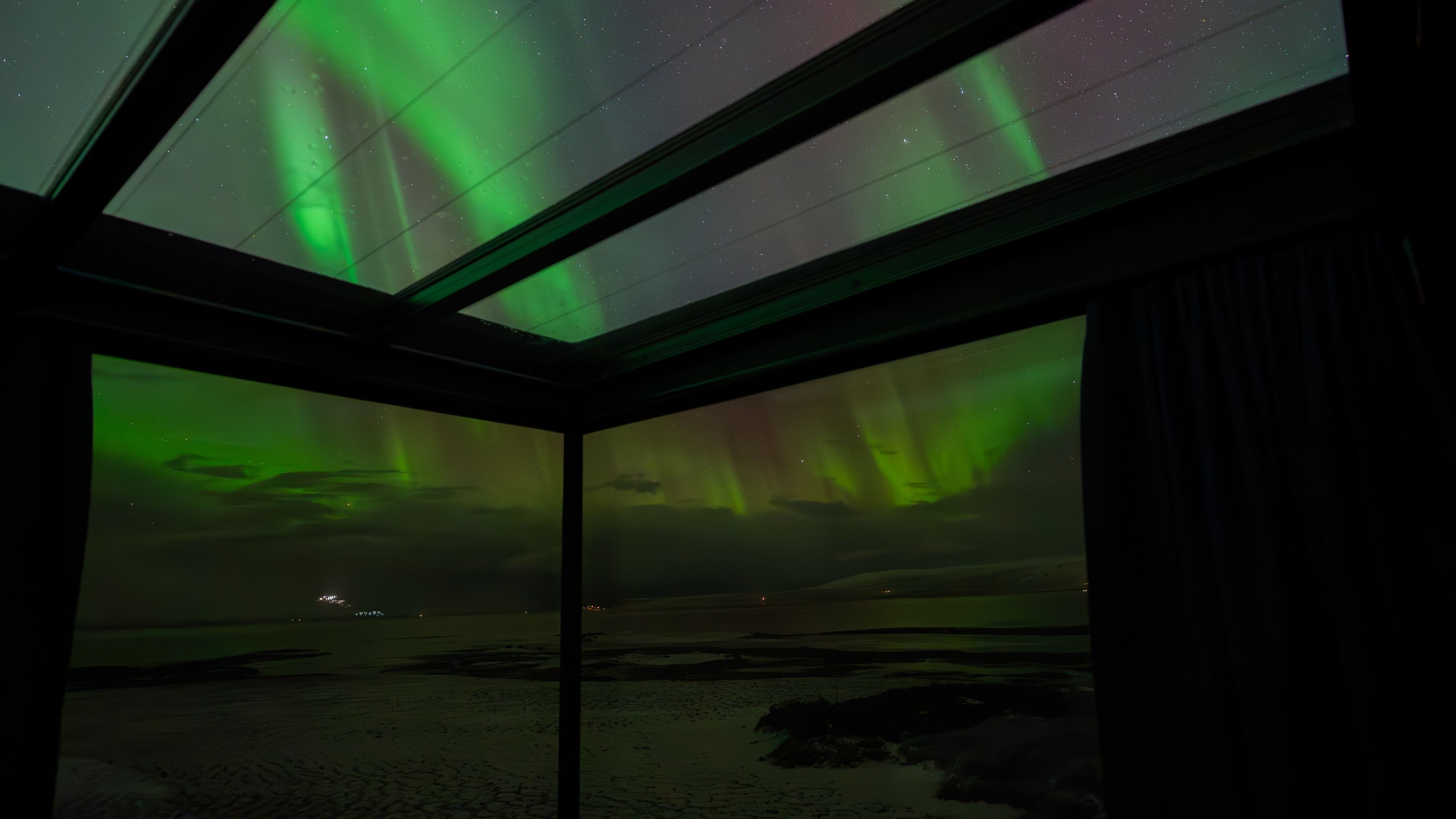
I hope this information helps you experience the Northern Lights yourself. I'm keeping my paw crossed for you! Don't forget, sometimes you get unlucky and nothing lights up, and even the best preparation doesn't help. But I advise you not to give up and keep going on the hunt. I can assure you, it's worth it. My wau-word of honor
Sif
Head of Entertainment
Mystic Light Lodge
